We awoke stiff and creaky after our ascent of Mount Rugby, and worked our way through a quiet breakfast. The wind started to build, hitting 50 knots out in the harbour. We could see the white-caps further out, but all was calm at our Kings Cove anchorage.
Clearly we weren’t going anywhere today. Some of us dozed. Pieter fixed the vacuum cleaner. Ange taught herself knots, and replenished the coffee supply by emptying endless pods from the Nespresso machine (which isn’t that useful as it only works when the generator is running). I fixed the cutlery drawer (again). Stuart busied himself making quesadillas and pies. Mish baked scones.


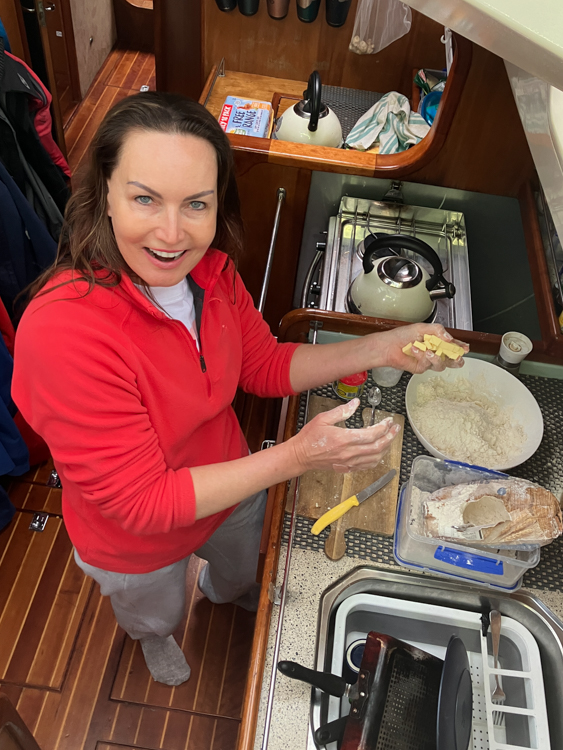
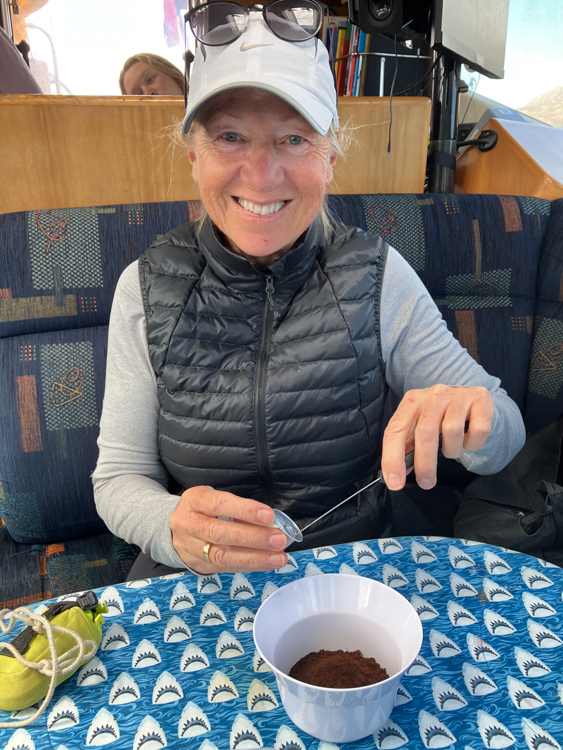
Later in the day, we played some cards and finished the last bottle of wine. This prompted us to turn out all the cupboards and fridges and freezers and bilges, not specifically looking for wine (honestly!), but because we had run out of fresh food and menu-planning was starting to become a problem. We located a handful of carrots, some frozen chopped vegetables, assorted cans, a trove of curry sauces, a number of unlabelled soup packets of uncertain vintage, and – somewhat incredibly – some frozen chickens and joints of pork. We even found some more wine.
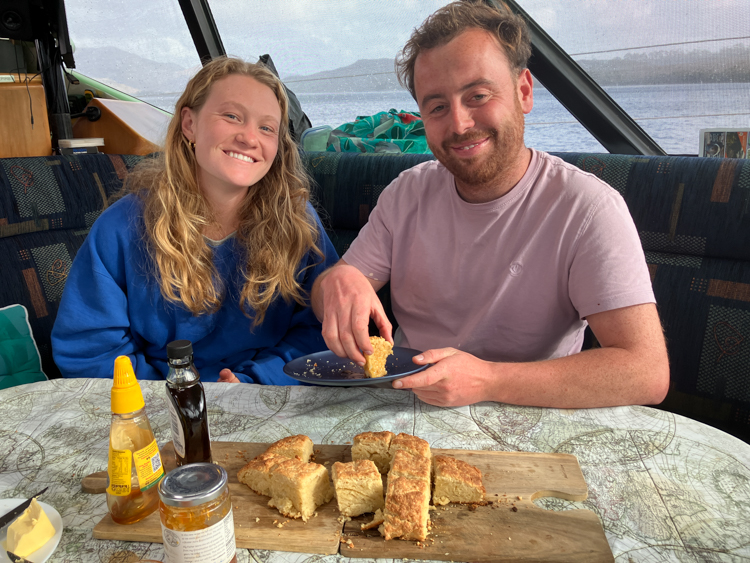
Live-action filming in Bathurst Harbour
By the next day, the storm was blowing itself out, and the wind was down to 35 knots. Skipper John wanted to make an instructional ‘Man Overboard’ video for the company, and we all agreed that this would be fun.
John provided a script and we had a rehearsal, and then headed out into the open water of Bathurst Harbour. The weather cooperated splendidly by blowing a gale and whipping the water into white-caps, which made the whole thing more visually appealing while tending to drown out the dialogue, some of which we had to dub over afterward.
Since Shien was an accredited cold-water swimmer, we had originally planned for her to be the casualty (suitably dressed in an immersion suit). We had got clearance from the owner via satphone, but in the end we used a rather natty dummy, which was just as well because it was a bit rough and we needed to do a couple of takes. In the end, though, everyone was happy with the result, and we called it a wrap.
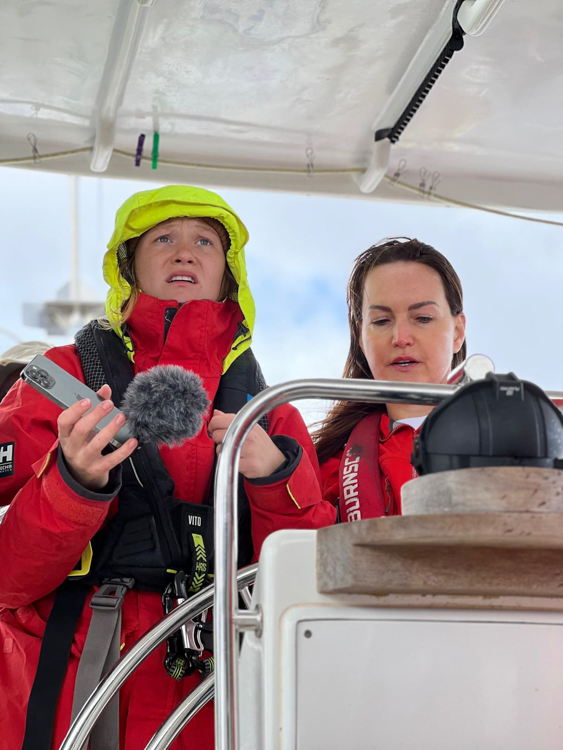
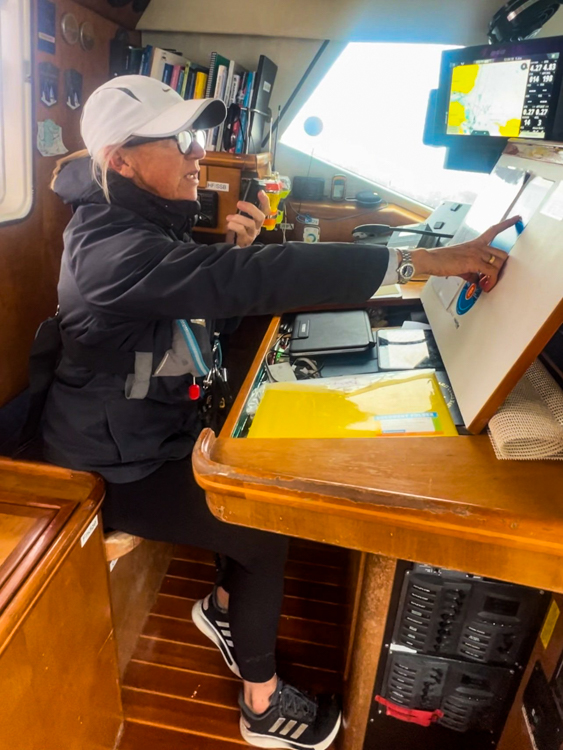
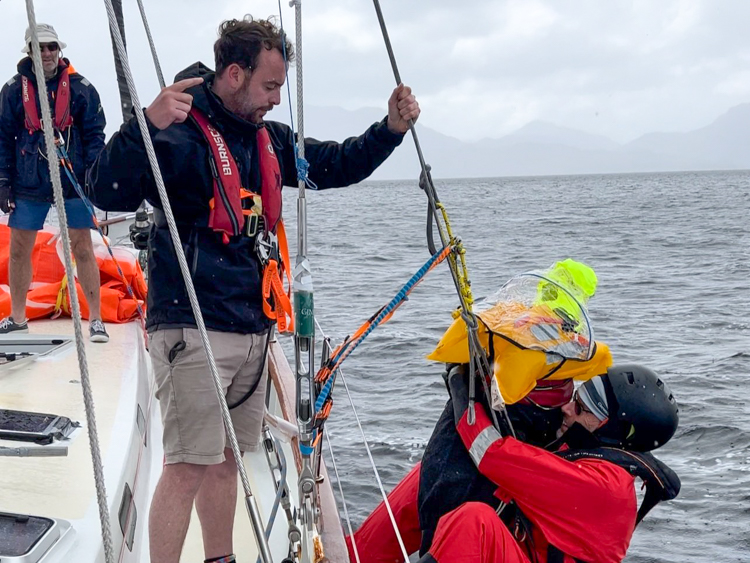
This is probably as good a point as any to discuss the broad practicalities of sailing something the size and weight of Silver Fern. The reason that John wanted to make a movie, was that most instructional Man Overboard videos feature a slick fibreglass yacht crash-gybing and a burly crew member hauling the casualty up over the rail. This is all very well out on the lake, but Silver Fern is 72 feet of steel and her boom – which is comfortably wide enough to stroll along – weighs well over a tonne. Even a gentle gybe in an ocean swell would bring it smashing across the deck, and something would break. Far better to calmly bring her round in a circle and send a swimmer down on the end of an electric winch, as we had practiced on our first day.
I’ve mentioned before that she is easier to steer on auto-helm than by hand, due to the lack of feedback from the hydraulic rudder. Another steep learning curve for me was that it takes at least four people to tack, and at least three just to furl the foresail. Putting a reef in the mainsail requires most hands on deck.
One of the hardest things for me to learn was that, when operating a winch on a boat this size, all you can see is that winch. Mostly the other end of the sheet or halyard is out of view, so you have no idea of progress. It all comes down to the skipper calling out commands; “grind” and you grind, “ease” and you ease. You don’t know when to stop until he says “hold”. Even furling the foresail, you can’t even see that from the winch aft of the cockpit, so you have to rely on the skipper to tell you when it’s rolled away.
This all means that the skipper is conducting the orchestra in intricate detail, a grind here and a sweat there and an ease over there, and he needs to get everybody’s move perfect every time otherwise an electric winch will be merrily grinding away until something breaks.
Breakdown in Schooner Cove
With the film in the can, we set sail for Schooner Cove, westward along Bathurst Channel towards the sea, and away from Bathurst Harbour proper. Since the winds were still up in the mid thirties and the river channel relatively narrow, we were motor-sailing on the main. With Schooners Cove ahead, all hands came on deck to drop the main, and we prepared to anchor.
It was at this point that the engine alarm went off. The temperature was showing over a hundred centigrade and there was a smell of burning rubber from the exhaust. John switched the engine off and we unfurled the genoa to make what was suddenly a very important tack. It quickly became clear that we weren’t going to make it round, so despite it still reading 109 degrees, we fired up the engine for just long enough to clear the shore, then off again.
We were going to have to tack our way in.
Tacking this big vessel on foresail alone in high winds and limited sea-room calls for intense concentration and a strong skipper. Those of us in the cockpit stayed focussed, those below stayed quiet and listened. Together, under firm command, we pulled off a good tack. Then another. Then another.
The wind howled. I was entirely focussed on the port winch and sheet. I think Rob was on the starboard winch and Brendon was tailing for us, but I wasn’t looking up from my task, I was in the zone. None of us could see what was happening out there in the world apart from John, calmly calling out the action, “Grind… grind… ease… ease… hold”. We cocked up the fifth tack, losing power on the turn, but recovered in time for the sixth. A few minutes later, John commented in a slightly strange voice, “OK, this one matters. This one needs to be perfect”.
The seventh tack was perfect, and we slid by an arm’s length from the shoaling beach. “Furl the foresail, drop the anchor!” We had arrived.

We needed somebody to swim underneath to check the propeller for lines or kelp. Rob had a go, but remember that the water is totally black with button-grass peat, and he couldn’t see anything. Shien, our cold-water specialist, got kitted out with fins and mask while we rigged a hand-line under the boat. She was easily able to hold her breath in the cold dark deeps, but was handicapped by never having seen the underside of a yacht. Each time she came up, I tried to make sense of what she was feeling with her hands, and attempted to explain how the rudder and propeller were arranged, while worrying that she was going to smack her head against some unseen sharp edge. She was starting to weaken with the cold and went down for one last attempt. There was a delay of nearly a minute, and then up she popped, triumphant. She had found the propeller, and had turned it freely in both directions.
John and Pieter had been labouring in the engine room, which although nicely appointed, is still a hot and cramped space to work. The obvious target was the impeller, but the housing was partly hidden behind a loosely hanging pack of electronics, and not at all easy to get to.
Eventually they got to the impeller, which of course was jammed solid onto its shaft, and it took some effort to finally prise it out.
It was completely shattered.

Looking closely at the impeller, I found that it was a cheap copy. This was odd, considering that there were half a dozen genuine spares aboard, any of which could surely have been used at the last service, but there we were.
We certainly hadn’t found all of the missing blades; presumably some of them were inside the heat exchanger. We hooked up the anchor-locker deck-wash and led the hose all the way aft down to the engine room (it only just reached!) and reverse-flushed the exchanger. Several large chunks dropped into the inspection tank until it ran clear.
Then it was simply a matter of sliding a new impeller onto the shaft…
Perhaps two hours later, the new impeller was still only half way into the housing. John and Pieter had improvised an ingenious compression clamp from cable ties and a filter strap, and it had worked up to a point, but there just wasn’t enough space to get any leverage. They came up for air, and I climbed in to have a look.
I have probably fitted more impellers than anybody else aboard, and muttering the twin mantras “If in doubt, find a bigger hammer” and “give me long enough lever, and I can move the world”, I went hunting for something that would work. Eventually I put together a kit comprising a long steel bar, a socket of about the right diameter, a sizeable piece of wood, and – of course – a very large hammer. The impeller took one look and slid gracefully into place.
And because nothing is easy, on the way in I must have snagged a lead, which had torn away from the earth rail. Simple enough to solder a new connection, but the ship’s electrical toolkit had vanished. While the crew turned the lockers upside down in the cabins above, we were gloomily contemplating twisting some old bits of rusty wire together… but then a cry went up from the saloon and down came a complete set of soldering and crimping equipment.
She started first time, and ran at a steady 72 degrees. We emerged blinking into the daylight, to applause and a roast dinner.
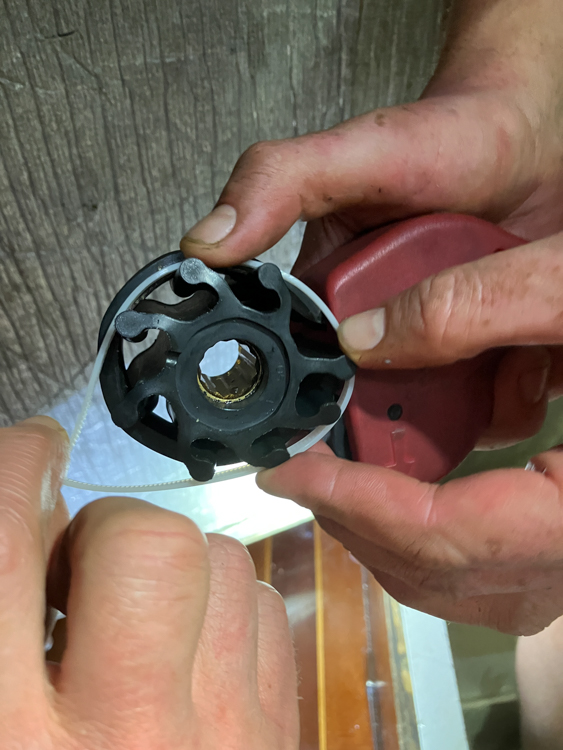


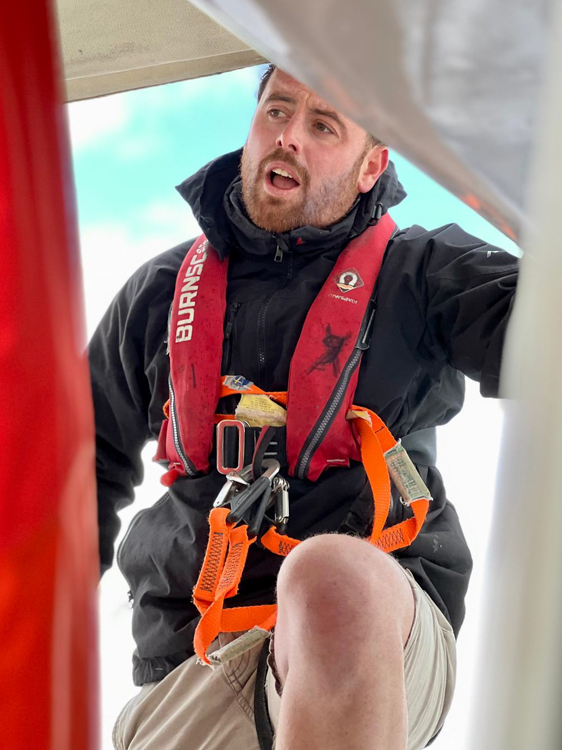
Thank you Reinhard 🙏 another fabulous account! It really was the most wonderful adventure.